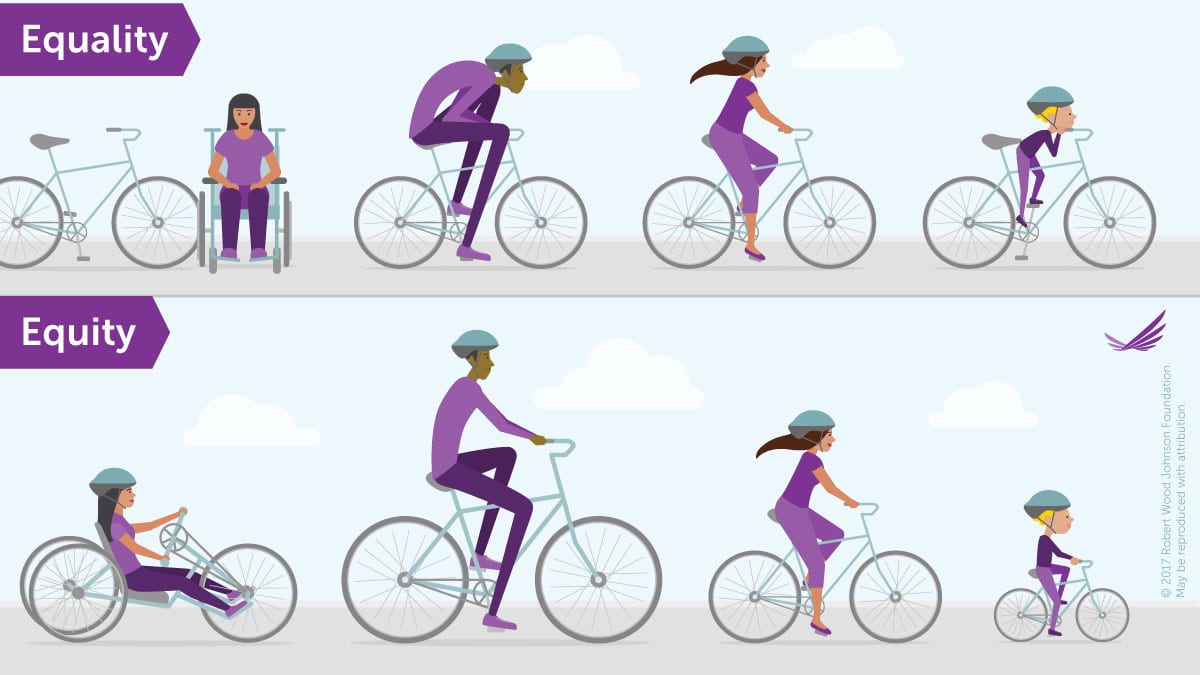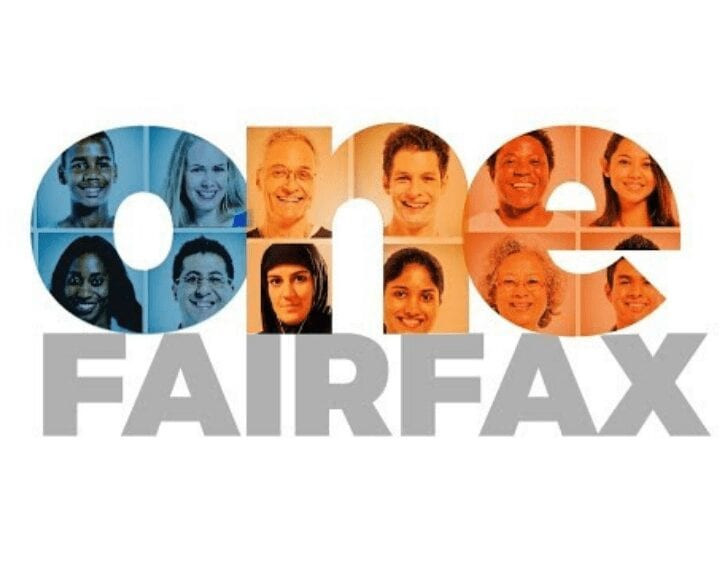A Conversation with Karla Bruce, Chief Equity Officer of Fairfax County
By: Northern Virginia Health FoundationKarla Bruce was appointed Chief Equity Officer in June 2018, following the adoption of One Fairfax, a policy that commits the Fairfax County Board of Supervisors and School Board to intentionally consider racial and social equity when making policies or delivering programs and services. Northern Virginia Health Foundation CEO Patricia Matthews interviewed Karla to learn more about her first year in this role and the challenges in helping county leaders and residents understand what equity is, why it’s important, and what’s next.
Pat: Tell me about your job, Chief Equity Officer, and what that entails.
Karla: My role as a Chief Equity Officer in Fairfax County is to lead the county's effort around becoming One Fairfax. This is a policy that was enacted in November 2017 after nearly a decade of work to address the disproportionate representation of African American and Latino children in our child welfare and juvenile justice systems. An in-depth analysis of our juvenile justice system found that there was no one root cause and that no single agency or department could address the problem. County and school leadership began to understand that county-wide institutional, structural and conceptual change was necessary.In hindsight, passage of One Fairfax—which went beyond just acknowledging that inequities exist—may have been the easy part because the policy didn’t prescribe a specific course of action. Our work now is to roll up our sleeves and address what are known as the “social determinants of health” or what we like to think of as the “social determinants of equity” to ensure that we have a thriving Fairfax County.A key part of my job is to help the county government to learn about equity—and specifically racial equity—and that it should be construed as a strategic consideration in all that we do. And then build the capacity to apply that lens throughout our work and facilitate relationships across the county government, with the school system and with community stakeholders like the Northern Virginia Health Foundation.
Pat: The concept of equity is complicated – it means different things to different people and is often confused with equality. How do you help people understand the concept and make that distinction?
Karla: We’re working hard to make sure people understand equity—which might not be a term that many people get— and, most importantly, the aspiration of One Fairfax. We are using and sharing definitions of equity, racial equity, and social equity. Our Board was very deliberate that given our local context, race should be considered, but we also must consider age, economic status, ability level, gender and other characteristics.We've been using graphics – including one with various people riding bikes that’s been circulating recently. There’s another one with kids trying to see a baseball game, but that resulted in the perception of scarcity and taking from one group to give to another. Also, in the baseball graphic, the kids are not part of the game, which also led to a lot of very interesting interpretations about not being a part of the community or sharing in the prosperity others in the county experience. The bikes make you feel like you are a part of something, that you are engaging in the activity and that you have the appropriate resources and tools to help you achieve your goals. These illustrations are an entry point into helping people better understand equity, their respective role in contributing to it and how they may inadvertently detract from it.
The bikes make you feel like you are a part of something, that you are engaging in the activity and that you have the appropriate resources and tools to help you achieve your goals. These illustrations are an entry point into helping people better understand equity, their respective role in contributing to it and how they may inadvertently detract from it.
Pat: Once people understand equity and why it’s important, how do you help build understanding of how to create change?
Karla: Depending on the context and who I'm talking to, I try to help people understand that advancing equity is not about changing people. It's about changing the conditions in which people live and improving access to opportunities. One of the challenges that we encounter is that many people come from a deficit model, meaning that they are conditioned to assume that there's a flaw in people, and to correct the flaw will resolve the issues people face.Our existing systems are centered on programs and delivering services to people. They aren't necessarily oriented to create the change that we want to see. Advancing equity requires skill-building at the individual level, training and capacity-building at the staff level, and community organizing and advocacy—all leading up to policy and legislative change. There must be action across that full spectrum to see results.A first step is helping people understand policy change. We're all very much conditioned to do something to help people, a “charity-based” approach as opposed to doing something to help change the systems or structures or conditions that may create the very problems we are trying to solve.Also, those of us who have been doing this work for a while have to recognize that not everyone understands the broad array of factors that affect the well-being of the county. Things like cradle-to-career success, community health and wellbeing, or just and safe communities. In an equitable Fairfax County, everyone can thrive. It's a good place to live, learn, play, and work for all and not just some. A lot of the challenge with unpacking inequity is that it is often institutional, and not coming from a place where someone is intentionally trying to discriminate against someone else.
Pat: Will you be making specific recommendations for change?
Karla: Yes. On the county government side, we're making recommendations to change several resources, practices and policies, which quite frankly might not sit well everybody. And that's where the rubber hits the road, and why the communications and messaging work we’ve been doing is so important. We need to make sure people understand that equity is important not just to “those people,” but to all of us and how it contributes to a thriving community for everyone.One example of something that we are looking at is our housing and land use policies to address the affordability challenge. The lack of affordable housing is a huge issue and I think most people would agree that the county needs more affordable housing options. But again, this comes back to the importance of communication and definitions. What do you mean by affordable housing? Do you mean low-income housing? If you don’t explain it correctly, people worry about property values. They think, “let's not have that in my community.” When in reality, we need to make sure teachers, and firefighters and child care providers, those in the hospitality industry and others who are so critical to our community can afford to live here.
Pat: Where would you say you are on the equity journey?
Karla: Even though a lot of work has happened so far, I think we're at the beginning. We've hit some important milestones. The adoption of the resolution and the policy are very important because at the very least, they say we're thinking about equity. We are now engaging with the community and stakeholders around co-creating solutions to community challenges. We are also building relationships with leaders in different sectors, and, very importantly, with and across all departments of the county. In many ways, that’s our most important audience. We’re making progress, but we still have a good way to go.

